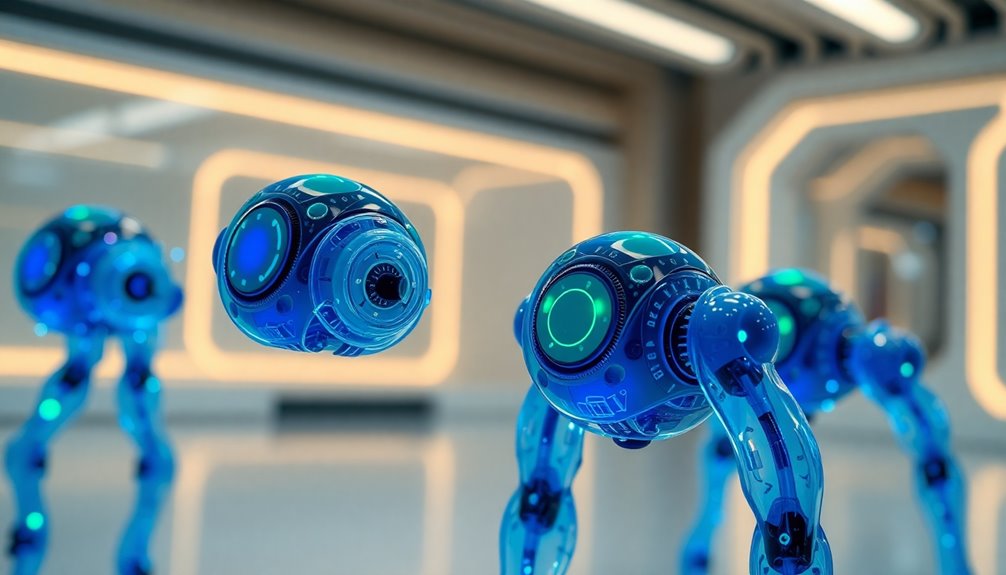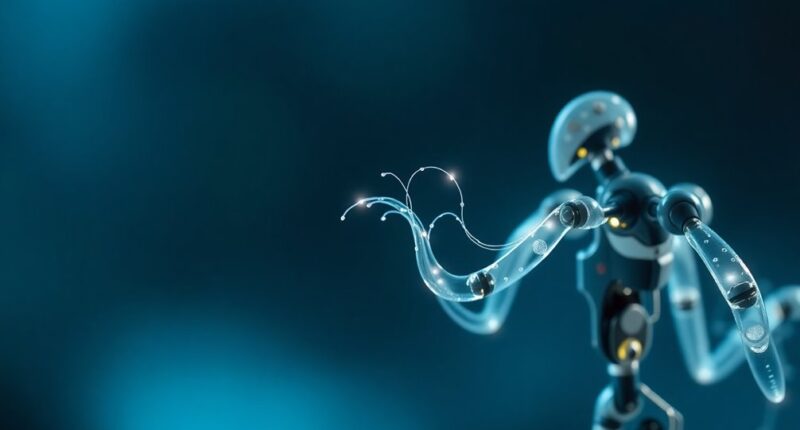In the evolving landscape of robotics, soft robots powered by embodied energy stand out for their unique blend of efficiency and adaptability. These systems integrate energy storage within their structure, allowing for dynamic interaction with their environments. As you explore the implications of this technology, consider how it might transform various applications and industries. What challenges and opportunities lie ahead for these innovative modular robots?

Imagine a world where robots seamlessly integrate energy storage within their structures, enhancing their efficiency and versatility. This is the promise of embodied energy in soft robots, a concept inspired by nature's ability to combine multiple functions within organisms. You'll see that when robots can store energy within their own bodies, they become more efficient and multifunctional, opening doors to a range of applications.
Soft robotics, with its flexible materials and adaptable designs, stands to benefit immensely from this technology. Embodied energy allows these robots to utilize energy more effectively, potentially extending their operational lifetimes. Picture a soft robot powered by structural batteries, which not only serve as energy sources but also act as vital structural components. This dual functionality is a game-changer, allowing for lighter designs that don't compromise strength or performance.
Consider dielectric elastomers, which can function as actuators, sensors, and even energy harvesters. They offer high strain capabilities, meaning they can stretch and bend significantly while still performing their tasks. You'd appreciate how soft electrostatic transducers can further enhance this functionality by combining solid and liquid dielectrics, making soft robots even more versatile.
Shape memory alloys and hydrogels also play essential roles, allowing robots to adapt their shape in response to temperature or humidity changes. This adaptability is further enhanced by the integration of sensing, actuation, and control within the robot's body.
As you delve into the concept of embodied intelligence, you'll find that it encompasses sensing, actuation, and control, all integrated within the robot's body. This integration enhances adaptability, enabling robots to modify their structure and behavior to interact more effectively with their environments.
Distributed control systems reduce computational complexity by allowing local processing, making these robots more efficient in real-time responses.
However, the journey toward realizing fully functional soft robots powered by embodied energy isn't without challenges. Advances in additive manufacturing are vital for creating complex, functionally graded composites, while onboard energy harvesting mechanisms can significantly extend operational lifetimes.
You'll need to balance size, weight, and power in your designs to maximize efficiency.
Despite the hurdles in modeling and controlling non-linear soft systems, the potential of embodied energy in soft robotics is immense. By leveraging these innovations, you're stepping into a future where robots not only perform tasks but do so with enhanced adaptability and efficiency, revolutionizing how we interact with machines and the world around us.









